
The Stearman LT-1 was a late 1920s American biplane, carrying four passengers plus mail.

The G.A.C. 102 Aristocrat or General 102 Aristocrat is a single-engined cabin monoplane built in the US just before the Great Depression. It proved popular, with over forty built; an early example was taken on an aerial survey of Antarctica. One survives.
The Yackey Monoplane was an American three seat parasol monoplane flown in the late 1920s. Two prototypes had some success in the 1927 New York - Spokane National Air Derby and orders were placed but a crash killed its designer and ended production.
The Stiles Dragon Fly was an American two seat monoplane aircraft of the late 1920s. It was aimed at private and club owners. Significant production was planned but few were built.
The Pacer Monoplane was a parasol wing, four seat, light aircraft, flown and produced in the US in the late 1920s.
The Simplex Red Arrow was a US single-engined monoplane produced in the late 1920s and early 1930s and intended as club machine or mail transport. Most used radial engines in the 90–110 hp (67–82 kW) range. They carried one or two passengers whose seats could be open or enclosed. One variant, the Red Arrow Dual Plane, was easily converted from monoplane to biplane and was available with two versions of the much more powerful Wright Whirlwind engines. In all about 20 were built.
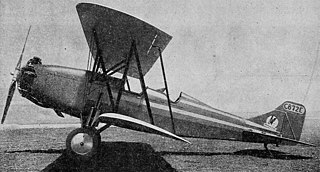
The American Eagle Phaeton was an American three seat, single engine sports biplane produced from 1929 until American Eagle failed financially in 1932. About 34 were built.
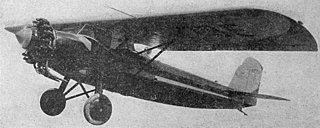
The Moreland M-1 was a 1929 U.S. three seat civil aircraft. Only four were built.
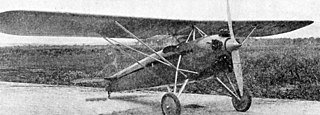
The Inland Sport series of parasol wing, sport and training side-by-side two seaters, introduced between 1928 and 1930, differed chiefly in their engines. They used three different radial engines, more than doubling the Sport's power over two years of development. 34 examples were built and frequently re-engined.

The Wallace Touroplane was a late 1920s U.S. three seat, high wing cabin monoplane. About 20 were built.
The Hodkinson HT-1 was a U.S., eight place, three-engined sesquiplane, first flown in 1929. Despite an order for five, only one had been completed before Hodkinson Aircraft went bankrupt near the start of the Great Depression. It operated in Guatemala for several years.
The Watkins Skylark was an American low-wing, cantilever two-seater designed for private and club use. A large anticipated production run in 1930 ended early when the company collapsed in the Great Depression, with only five or six registered.

The Zenith Albatross Z-12 was a large, three-engined airliner built in the United States in 1928. It could carry up to 11 passengers. Only one was completed.

The Huntington H-11 Governor was a two-seat cabin monoplane with a high, cantilever wing built in the United States and first flown around 1930. Three were completed.
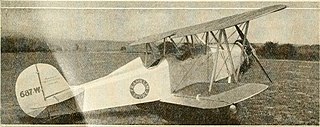
The Franklin Sport is a two seat sport and training biplane built in the U.S. in 1930. Several different engines, in the power range 55–90 hp (41–67 kW), were fitted. Two remained airworthy in 2011.

The Ireland Neptune was a four or five place pusher configuration biplane sold in flying boat and amphibian versions. Designed in the U.S. and first flown in 1927, well over 50 were built.

The Lincoln AP was a U.S., single engine, high wing, general purpose civil cabin aircraft first flown in 1930. Only four were built.

The Cairns A was a low wing, two tandem seat monoplane with a metal structure and stressed metal skin. It first flew late in 1931 with a 90 hp (67 kW) engine but was later fitted with more powerful engines including a 185 hp (138 kW) radial.
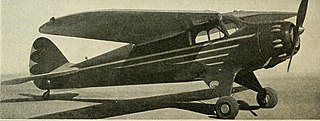
The Swanson-Fahlin SF-1 was a high wing, two seat cabin aircraft with a small radial engine, designed in the United States and first flown in 1934. Only one was built.
The States Super Monoplane was a tandem two seat, civil sport and trainer aircraft built in small numbers at the start of the U.S Great Depression.
















